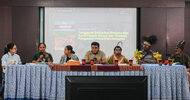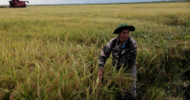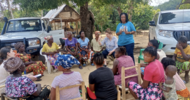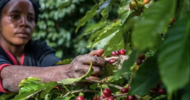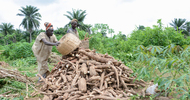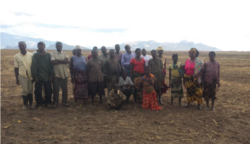
Families whose land was taken by AgroMoz, Nampula Province, 2014 (Photo: Naoko Watanabe (JVC) and Clemente Ntauazi)
The rise and fall of ProSavana
by Dr. Sayaka Funada-Classen
What happened to the now infamous ProSAVANA program, one of the world’s largest land grabbing deals signed by Japan, Brazil and Mozambique in 2009? “Is it dead or alive?” — these are frequent questions asked by those who have come to be interested in the triangular program and the peoples’ resistance to it. ProSAVANA has been attracting the attention of many journalists, scholars, practitioners and activists for more than 10 years. Grasping the program in its entirety, however, is not an easy task.
Yet, the program itself continues to exist, although how and why it persist is unclear. This stems from the complexity and opacity of the Japanese public actors involved, who are the most crucial key players for the survival of the program as its funding source. Unless one understands the context and analyzes the primary sources of the Japanese actors, it is extremely difficult to gain a full understanding of ProSAVANA. This paper, therefore, focuses on the Japanese context and explores the history of ProSAVANA based on official documents and recordings, especially of the Japanese actors involved.
Read the full report
Read the full report
INDEX
1. The Rise of ProSAVANA
(1) Bringing the ‘success of the Cerrado’ to Africa
(2) Rivalry with China and Japan’s international reputation
(3) Japan’s initiative and leading role
(4) The Japan-Brazil joint mission for promoting investment in Mozambique
(5) FGV’s Nacala Fund and JICA
(6) The ProSAVANA Development Initiative Fund and Master Plan
2. Peasant Protest
(1) The first protest from the largest peasant movement: UNAC
(2) The role of civil society in the traditional donors: Japan
3. JICA’s counter-resistance strategy
(1) Minimizing peasant voices
(2) The ProSAVANA Communication Strategy
(3) Mozambican officials in the frontline of the ‘foreign conspiracy theory’
(4) Mythologizing the linkage with the Cerrado and land grabbing
(5) Disconnecting ProSAVANA from the Nacala Economic Corridor Development
(6) Disconnecting land grabbing cases
4. From Triangular Cooperation to Bilateral Cooperation
(1) Unstoppable Japanese public projects/programs
(2) The only exit strategy for JICA: dialogue as a fait accompli
(3) Public hearings like election rallies
(4) Strengthening the local Frelimo apparatus
5. Bilateral counter-resistance strategy
(1) JICA-MASA intervention in UNAC and the death of its president
(2) CIA-like intelligence leaked by unknown insiders
(3) Opening an access point to Mozambican civil society for JICA
(4) Disempowering the common enemies: ‘No to ProSAVANA Campaign’
(5) Targeting UNAC and minimizing its role in society
(6) Divide and rule by giving a consultancy contract to a local NGO
(7) Divide and rule by accepting the tendentious inception report
(8) Landgrabbing by a company supported by ProSAVANA?
(9) Assisting JICA with counter-discourse
(10) Press tour to diffuse counter-discourse
6. Small victories and ‘Satyagraha’ (the force of truth)
(1) Open Letter to JICA President
(2) The force of truth and MOFA’s General Director
(3) JICA’s manipulation of the Objection Inspection Procedures
(4) ‘The orientation’ by the Japanese Foreign Minister
(5) Maputo Administrative Court condemns ProSAVANA
(6) JICA and the sued ProSAVANA Coordination Unit
7. Current situation and historical roots
(1) JICA returns to its old tricks and promotion of ‘local beneficiaries’
(2) Pushing forward the Nacala Economic Corridor (natural gas) Development
(3) Historic legacy: Northeast China/‘Manchuria’
8.Conclusion






